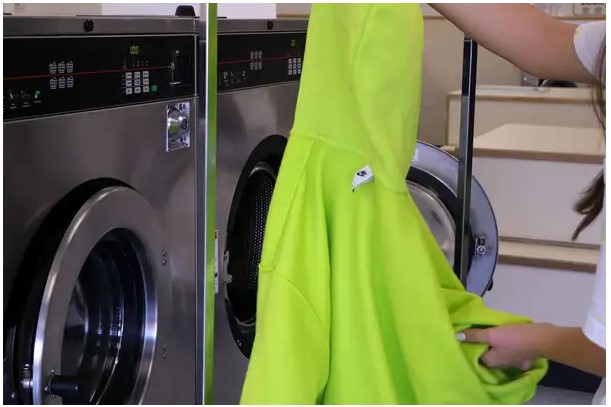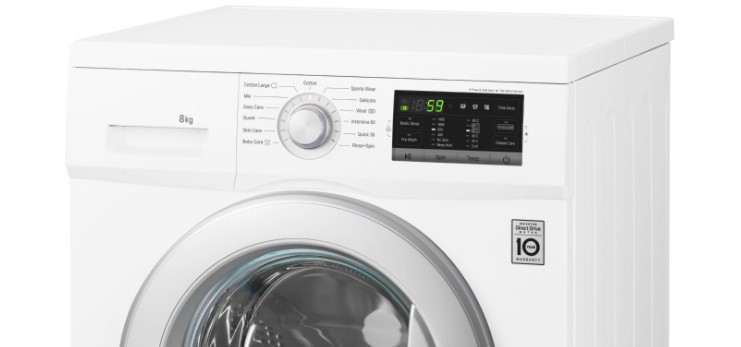Yikes! How Can I Tell if My Washer’s Drive Block Is Kaput?
Table of Contents
As an appliance repair newbie, nothing sends a chill down my spine quite like the ominous sounds coming from my trusty washer during its spin cycle. That grinding, squealing racket can only mean one thing: my washer’s drive block is on the fritz. But how can an amateur like me tell if the drive block has gone completely kaput? Fear not; I’m here to walk you through the warning signs so you’ll know whether to call in the pros or try an easy DIY fix. This quick-read guide and FAQ will have your washer humming happily again in no time. Ready to diagnose that drive-block dilemma? Let’s dive in!
What Is a Washer Drive Block, and What Does It Do?
So your washer is making some funky noises or not spinning as well as it used to, huh? As someone who’s been there, I feel your pain. The good news is, there’s a decent chance it’s just the washer drive block, an easy and affordable fix.
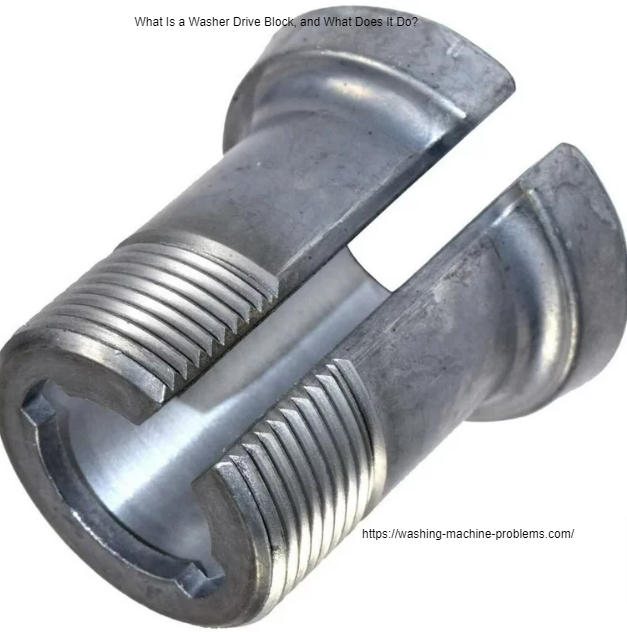
The drive block is what attaches the washer’s motor to the transmission, which spins the drum. If it’s damaged or worn out, your washer won’t spin or agitate properly. Not good! To check if your drive block needs replacing, here are a few things to look for:
- Loud grinding or squealing noises during the spin cycle. The drive block should operate quietly, so loud sounds could indicate it’s busted.
- The washer is not reaching high speeds. If your washer struggles to get clothes spinning fast, the drive block may be slipping.
- Leaking water or oil underneath the washer. The drive block seals components together, so if it’s cracked, you may notice leaks.
- Clothes are still sopping wet after the final spin. Without a functioning drive block, your washer can’t properly extract water from clothes.
If any of this sounds familiar, there’s a good chance your washer’s drive block has it. Don’t worry, replacing it yourself is totally doable and will have your washer spinning like new again in no time. Stay positive; you’ve got this! With a little elbow grease, your wash will be back on track before you know it.
What Are the Symptoms of a Bad Washer Drive Block?
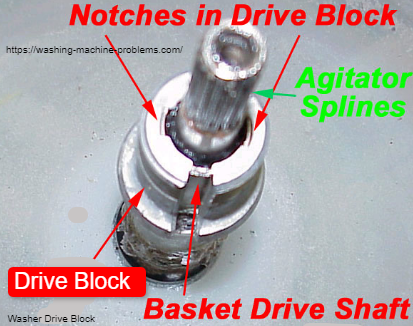
Oh no, is my washer acting up again? As much as I love freshly laundered clothes, washer trouble is the worst! If your spin cycle is off or your washer is making weird noises, it could be a sign that the drive block is damaged. ### What does the drive block do again?
The drive block is what attaches the washer’s motor to the transmission, which spins the tub. If it cracks or breaks, the motor can’t properly power the tub, and you’ll notice problems.
- Are clothes not spinning well or still sopping wet after a cycle? The drive block may not be transferring enough power to the tub.
- Loud grinding, squealing, or rattling sounds? That could be the damaged drive block struggling to turn the tub.
- Leaking water underneath the washer? A cracked drive block can allow water to escape.
If any of these sound familiar, it’s best to have a technician examine your washer. They can test the drive block to determine if a replacement is needed. A new drive block installation typically costs between $200 and $500 but is necessary to get your washer spinning and cleaning properly again.
While washer issues are never fun to deal with, a functioning drive block is essential for clean clothes each week. Call your technician if problems persist; your fresh laundry awaits! Hopefully, a quick drive block replacement will have your washer and your laundry routine back in working order in no time. Now if I could just get the motivation to actually fold all those clothes…!
How to Diagnose if the Drive Block Is Faulty
Yikes, my washer has been acting up lately—could the drive block be to blame? As an avid DIYer, I’m determined to figure this out myself. Here’s how I plan to diagnose if the drive block in my washer has gone kaput:
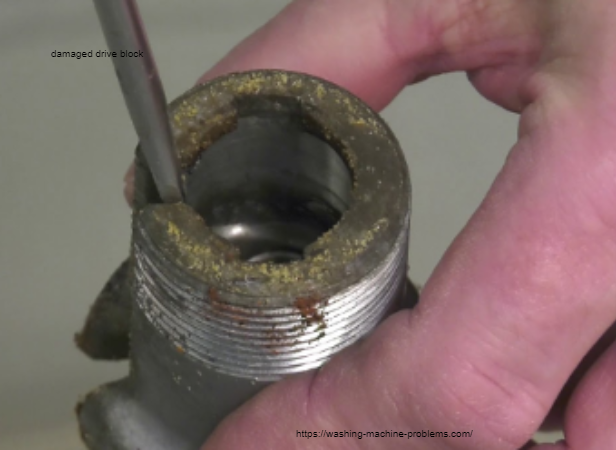
Are there strange noises coming from the washer?
If my washer starts making loud clanking, squealing, or grinding noises during the spin cycle, that could indicate the drive block is damaged or worn out. The drive block is what attaches the motor to the transmission, so if it’s faulty, the motor won’t be able to properly spin the drum.
Is the washer not spinning or agitating properly?
If clothes come out sopping wet, the washer isn’t reaching high enough spin speeds. Or if the washer isn’t agitating and moving clothes around during the wash cycle, the drive block may need replacement. The drive block translates the motor’s rotation into the mechanical energy that spins the drum and agitates the clothes.
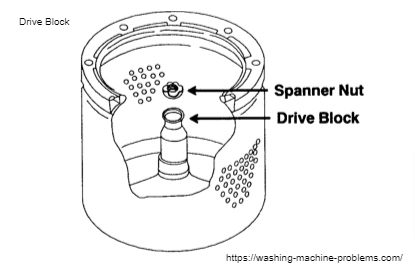
Does the washer shake and vibrate excessively?
Too much shaking and rattling during the spin cycle can also point to issues with the drive block. If it’s worn or loose, it won’t securely fasten the motor to the transmission, causing the whole washer to wobble out of balance as the drum spins.
Can I see any visible damage to the drive block?
As a last resort, I may need to remove the drive block to inspect it. If the rubber bushing inside is cracked, torn, or misshapen, or if the metal hub of the pulley looks overly worn or warped, replacement is probably necessary. The drive block endures a lot of stress over the years, so visible damage is a sure sign it’s time for a new one.
I hope this helps you diagnose if your washer’s drive block has bought the farm! Let me know if you have any other questions. I’m happy to help in any way I can to get your washer spinning again!
When Should the Washer Drive Block Be Replaced?
If your washer is making funny noises or not spinning properly, the drive block could be the culprit. This little part is essential for transmitting the motor’s power to the rest of the washer, so if it’s damaged, your machine won’t work right. Here are some signs that it’s probably time for a replacement.
Is the washer not spinning or agitating?
If your washer isn’t spinning, agitating, or both, the drive block is likely shot. This part connects the motor to the transmission, so without it, the power can’t get where it needs to go. It’s time for a new drive block!
Are there strange noises coming from the washer? ###
Loud grinding, squealing, or rattling noises can indicate the drive block is failing. As it starts to wear out, it may not mesh properly with the motor and transmission, causing all kinds of racket. Don’t ignore these warning sounds; get a replacement part ordered!
Is the washer leaking oil?
The drive block is lubricated with oil, so if you notice oil puddles under your washer, the drive block seal is probably damaged or worn out. Since oil is critical for the drive block to function, a leak means it’s time for replacement.
Has the washer been in use for over 10 years?
While drive blocks can last longer with gentle use and proper maintenance, most need replacement after a decade or so. If your washer is getting older, its drive block has endured hundreds of wash cycles and is more prone to failure. For the best performance and to avoid future issues, replace an older drive block.
If any of these signs sound familiar, don’t delay; get a new drive block installed in your washer ASAP. When this small but mighty part starts to fail, your washer just won’t work right. Replacing the drive block should have your machine back in working order and running like new in no time. Happy washing!
Is it possible to repair a damaged drive block?
Well, my curious friend, the good news is that a damaged drive block in your washer is often repairable. As an avid DIYer, I’ve repaired a few washers in my day, and the drive block is typically one of the easier fixes. Let’s dive in and see what’s involved!
To start, you’ll want to turn off the power to the washer and disconnect it for safety. Next, remove the washer cabinet by unscrewing the back panel; this will allow access to the drive block. The drive block is the part that connects the motor to the transmission, enabling the drum to spin. If damaged, you may notice loud noises, the drum not spinning properly during the spin cycle, or water not draining.
Once the back panel is off, locate the drive block—it’s a pulley-looking part the motor belt wraps around. Try spinning it manually to check for damage or warping. If it doesn’t spin freely, it likely needs a replacement. You can find a new drive block online or at an appliance parts store for $30 to $60. Be sure to get the exact part number for your specific washer model.
To install the new drive block, simply slide off the motor belt, remove the old drive block, and slide on the new one. Put the belt back on, test that the drum spins freely, then reassemble your washer. Voila, your washer should be back in working order! While not too complicated, this repair may be easier with an extra set of hands. If you’re not comfortable doing it yourself, a technician can replace a drive block for $150 to $250.
The bottom line is that a damaged drive block doesn’t necessarily mean it’s time for a new washer. With some mechanical aptitude, the right replacement part, and patience, you can get your washer spinning again in no time. And when you hear that familiar swishing sound, you’ll feel a sense of accomplishment in saving money and keeping another appliance out of the landfill. Happy washing, my friend!
How much does replacing a bad drive block cost?
Oh boy, if your washer’s drive block goes kaput, that’s no good! The drive block, also known as the transmission pulley, is what attaches the motor to the transmission in your washer. If it breaks, your washer won’t spin or agitate. Not exactly what you want to happen when you’ve got a pile of dirty clothes waiting to be washed!
How can I tell if the drive block is damaged?
There are a few signs that your washer’s drive block may need replacing:
- Your washer won’t spin or agitate at all. The drive block is what powers these functions, so if it’s broken, they won’t work.
- You hear loud noises coming from your washer, like grinding, squealing, or rattling sounds. A failing drive block can make a racket!
- Clothes come out still soaked. Without the spin cycle working, your clothes won’t get rid of excess water.
- The washer shakes or vibrates excessively. A damaged drive block can cause the washer to wobble and shake.
If your washer is exhibiting these symptoms, it’s probably time to call a repair technician to inspect and likely replace the drive block. The good news is that replacing a drive block is often a quick fix and will get your washer spinning and washing again in no time!
How much will it cost to replace the drive block?
Replacing a washer’s drive block typically ranges from $150 to $350, depending on your washer model and local service rates. The part itself usually costs between $50 and $150. It’s not the cheapest repair, but considering how essential the drive block is to your washer functioning properly, it’s worth the investment to get your washer back up and running again!
A small price to pay to restore your washer to working order, if you ask me. No more sudsy, sopping wet messes—your clean clothes will be spinning their way to freshness again before you know it!
What’s the best way to prevent drive block failure?
The best way to prevent drive block failure in your washer is to give it some TLC and exercise those spinning muscles! As an avid washer user, keeping my machine in tip-top shape is a top priority.
Run a monthly maintenance cycle.
Once a month, I run an empty hot wash cycle with 2 cups of white vinegar in place of detergent. The vinegar helps break up any soap residue and keeps hoses and parts gunk-free. My washer thanks me with fresher-smelling loads and fewer error codes.
Alternate load sizes
I try not to do loads of heavy towels or sheets every time. Mixing in some lighter loads gives the drive block and motor a break, so they don’t have to work as hard. Variety is the spice of life!
Leave the door open.
When not in use, I leave my washer door open to air it out and prevent musty smells from building up inside. This also allows the rubber seal and any remaining moisture to dry out, which helps prevent mold and mildew growth. An open door is a happy washer!
Clean the drain pump filter.
The drain pump filter catches lint and debris, preventing clogs. I clean mine out once a month or if my washer is draining slowly. It’s an easy DIY task that makes a big difference. A clean filter means efficient, trouble-free draining.
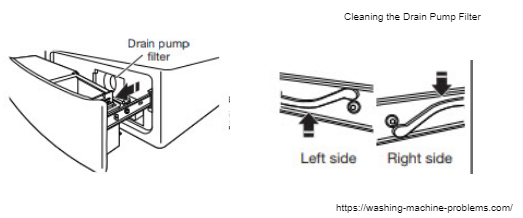
Call a repair tech if needed.
If my washer starts making weird noises, leaking, or not spinning properly, I call a repair tech right away. Early diagnosis and repair of any issues helps prevent catastrophic drive block or motor failure down the road. An ounce of prevention is worth a pound of cure!
Keeping my washer happy and healthy with regular TLC and exercise is the best way I’ve found to prevent expensive drive block failure. And since I can’t live without my washer, it’s worth every effort! How do you pamper your washer? Let me know if you have any other tips for keeping washers in working order.
Quick Read: 5 Signs Your Washer’s Drive Block Needs Replacing
Oh no, is my washer making some scary noises? As an appliance repair newbie, determining if the drive block in your washer needs replacement can be tricky. But never fear; here are some telltale signs to look for:
1. The washer is leaking oil.
If you notice oil spots on the floor around your washer, the drive block seal is probably damaged or worn out, allowing transmission oil to leak. This is not good—the drive block needs oil to function properly. It’s time for a replacement!
2. The washer won’t spin or agitate.
The drive block is responsible for transferring the motor’s power to the transmission, which, in turn, spins the basket and agitates the clothes. If your washer won’t spin or wash at all, the drive block is likely kaput.
3. The washer makes grinding noises.
As the drive block wears out, the parts inside grind against each other, producing unpleasant scraping and grinding sounds. These noises indicate it’s on its last legs, and replacement is imminent.
4. Clothes aren’t getting clean.
When the drive block starts to fail, the washer may not spin fast enough or agitate properly to clean your clothes. If you notice your clothes still seem dirty after a wash, the drive block could be the culprit.
5. The washer shuts off mid-cycle.
If your washer randomly shuts off during a wash cycle, the drive block may be overheating from excess friction and damage. For safety, it will power off to avoid potential fire risk. Have it checked by a technician immediately.
The drive block is a crucial washer part, so if any of these signs sound familiar, it’s best to have it inspected and replaced. A new drive block should get your washer back to happily spinning, washing, and most importantly—not leaking oil or making scary noises! Stay positive, you’ve got this appliance repair thing in the bag!
FAQs: Answers to Common Questions About Faulty Washer Drive Blocks
Oh man, if your washer’s drive block goes kaput, that’s not good news. The drive block is what attaches the motor to the transmission, which spins the drum. If it fails, your washer won’t agitate or spin. But don’t panic just yet—here are some clues to determine if your washer’s drive block needs replacement.
The biggest red flag is if your washer stops agitating altogether or won’t spin at all. When the drive block fails, the motor can’t transfer power to the transmission, so the drum won’t move. Have you noticed your washer not agitating or spinning recently, or making strange grinding noises during the wash or spin cycle? If so, the drive block could be the culprit.
Another sign is leaking oil under the washer. The drive block contains gears and pulleys that require lubrication to function properly. If the seal or gasket fails, oil can leak onto the floor. Check under and behind your washer for any oil spots or puddles. If you see oil and your washer isn’t agitating or spinning, the drive block likely needs replacement.
The drive block is typically located under the washer, attached to the side of the transmission. You may be able to visually inspect it for damage, like cracked or worn parts. However, I don’t recommend dismantling your washer yourself unless you’re an experienced technician. It’s best to call a pro for a proper diagnosis and repair.
Replacing a faulty drive block typically costs between $200 to $500, depending on your washer model and local service rates. While not the cheapest repair, replacing the drive block will get your washer agitating and spinning again so you can keep those loads churning! The good news is, with a new drive block, your washer should provide many more years of faithful service.
Does this give you an idea of what to look for if you suspect your washer’s drive block is kaput? Let me know if you have any other questions! I’m happy to help in any way I can.
Conclusion
After reading through the warning signs and troubleshooting steps, you should have a good sense of whether or not your washer’s drive block needs replacement. If it’s still unclear or you have additional questions, don’t hesitate to contact a repair professional. They can inspect your washer in person and determine if replacement parts are needed.
While appliance issues can be frustrating, the good news is this is typically an easy and affordable fix. With a new drive block installed, your trusty washer should be back to its normal spin cycle in no time. You’ll be able to get back to tackling that never-ending pile of laundry again and check this task off your to-do list! Staying on top of maintenance like this will help keep your washer in working order for years to come.


